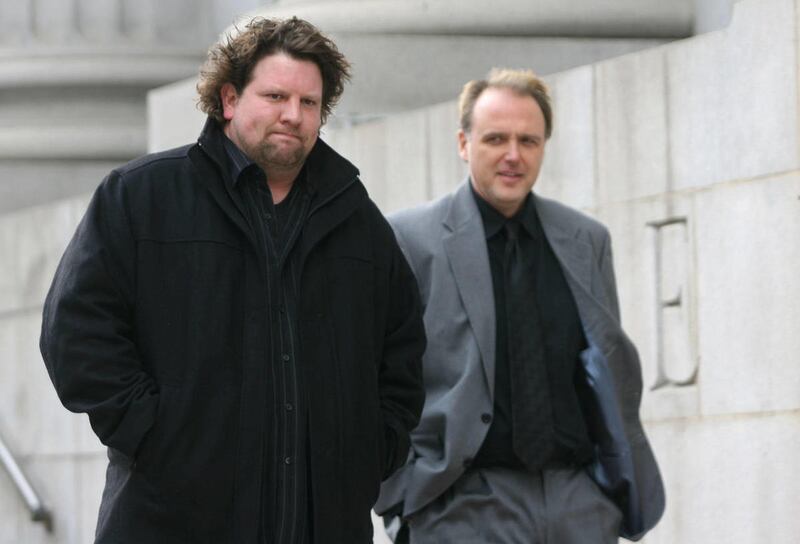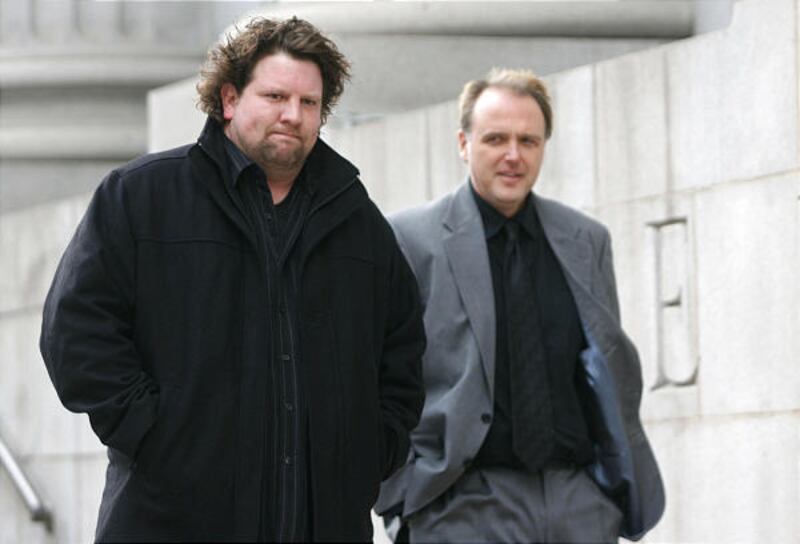SALT LAKE CITY — Jake Francom still remembers the feeling of claws, grasping at his skin through the vinyl of his tent.
"It didn't rip the tent, it just pushed my head down," he said. "That's when the bear struck through the side of the tent, took my pillow with him. It happened really fast. All I seen was a paw coming through."
From the witness stand Monday, Francom matter-of-factly recounted the encounter that startled him from sleep around 5:30 a.m. on the morning of June 17, 2007. Though Francom and his fellow campers escaped uninjured, later that day, at the same camp site, 11-year-old Samuel Ives wouldn't escape with the same fortune.
Instead, the boy was ripped from the tent and mauled. His body would be found two hours later and hundreds of yards away in the surrounding American Fork Canyon forest. Whether it was negligence on the part of the U.S. Forest Service that led to his family being allowed to camp at the site considering the earlier incident is now the subject of a federal lawsuit.
The five-day trial of Francis, et al. v. U.S. Forest Service began Monday with opening arguments from attorneys on both sides of the case.
"This is a case that ... deals with duty, breach and harm caused by that breach," said Allen Young, attorney for the Ives family.
Young argued that the government, as the land owner, had an obligation to close off the site, which is located in American Fork Canyon, until the dangerous bear could be located. At the very least they could have notified the camp host, who in turn could have warned potential campers.
"The family had no knowledge or information about the bear attack," Young said. "They will testify that had they known, it would have been the last place they would camp."
Citing negligence on the part of the federal government, the family is asking for $2 million. But Amy Oliver, an attorney for the Forest Service, said there had been warnings — as evidenced by the black bear warning signs posted throughout the area.
"The plaintiffs are seeking to impose a duty to warn them about something that had never happened in the state of Utah — a fatality by a black bear."
She said there had only been reports of property damage and that the now-former Forest Service employee who failed to act on the incident Francom reported, was since disciplined. Beyond that, responders from the state Division of Wildlife Resources are responsible for bears and they didn't think there was a real, significant threat.
"At the end of a lengthy search, they decided there was no additional risk," Oliver said. "The risk was so low that the state didn't inform anyone of what they had done that day."
She said those with the U.S. Forest Service would have relied on the DWR officials to let them know if additional action was required.
Francom testified that he had camped in the area since he was "out of diapers" and had been in the Timpanookie camping area at least 50 or 60 times, but had never seen a bear. He said they kept their food in coolers at least 50 feet from their tents and their garbage locked in the back of a truck.
When he awoke to being struck on the head, he initially thought it was his friends joking with him.
"I was struck three times," he said. "The third time I went to sit up because I realized something was out there."
A friend with a pistol fired a few shots to convince the bear to back off and they later chased it away with rocks.
Francom reported the incident to the Utah County Sheriff's Office, which said it would call the Forest Service and referred him to another dispatch line to report it to DWR. Based on his report, DWR officials declared the bear a Level III threat, which requires that the animal be located and euthanized. They spent five hours searching with two dogs and decided to come back with a trap in the morning.
Later, Ives, his mother, stepfather and stepbrother arrived at the camp to test out a new tent the boys had just given their stepfather, Young said.
"They went to sleep and the next thing they noticed was the ruffling of the tent," he said. "Sam yelled out. (His stepfather) jumped out of the tent and saw Sam was gone. The last thing (he) heard was Sam yelling, 'Help!' "
Carolyn Gosse was the designated U.S. Forest Service law enforcement officer at the time. She had been there 13 years when she took the call that Sunday morning reporting Francom's run-in with the bear. On a tape recording played in court relaying her conversation with an emergency dispatcher, she said she would notify her supervisor and the campsite host and took Francom's contact information. Then, apparently, she did nothing.
"I knew that the DWR was in charge of animals and if they needed the Forest Service, they'd call me," Gosse said. "I truly believe the DWR needed to communicate with the Forest Service."
She then conceded she "said too much in that dispatch tape" when it came to what she offered to do. She testified in a deposition taken earlier that she was off-duty and tending her children. She was "getting distracted" and took down the wrong number for Francom and tried to call protections officers, but had to guess at their numbers.
"I wanted to try and do the best I could," she said.
She didn't call anyone until she was notified of Samuel Ives' death at 2 a.m. She later resigned after an investigation found she failed to call Francom, to notify federal protection officers or to verify that DWR employees were aware of the incident.
Ives' mother, Rebecca, and father, Kevan Francis, were both at the hearing. Francis said getting the case before a judge was "a long time coming."
"I'm super committed to it, it's just frustrating to have everybody pointing their finger at everybody else," he said. "That's been the biggest obstacle."
The family has a separated case pending in the state court system against the Division of Wildlife Resources. The federal trial is expected to continue through Friday.
e-mail: emorgan@desnews.com
Twitter: DNewsCrimeTeam



